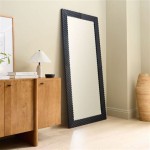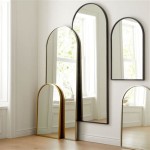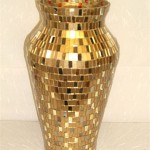How Does a Mirror Work: Reflections and the Science Behind Them
Mirrors are ubiquitous objects, often taken for granted despite their fascinating underlying physics. Their ability to reflect light allows us to see our own image, but the mechanism behind this seemingly simple action is a complex interplay of light waves, reflection, and human perception.
Reflection: The Foundation of Mirror Functionality
Reflection is a fundamental principle in optics. It describes the change in direction of a wavefront at an interface between two different media, so that the wavefront returns into the medium from which it originated. In the case of a mirror, this interface is between the air (or other surrounding medium) and the reflective surface of the mirror.
The Role of Light in Mirror Reflection
Light, an electromagnetic wave, plays a crucial role in the functionality of mirrors. When light strikes the surface of a mirror, it doesn't simply bounce off randomly. Instead, the angle at which the light strikes the surface (the angle of incidence) is equal to the angle at which it reflects (the angle of reflection). This principle, known as the law of reflection, is essential for understanding how mirrors form images.
The Structure of a Typical Mirror
A typical mirror comprises a thin layer of highly reflective material, usually silver or aluminum, applied to the back of a sheet of glass. The glass primarily serves as a protective layer for the reflective coating, ensuring its durability and smoothness. While the glass itself can reflect a small portion of light, the vast majority of reflection occurs at the metallic coating.
Specular vs. Diffuse Reflection: How Mirrors Create Clear Images
There are two primary types of reflection: specular and diffuse. Specular reflection occurs when light rays reflect from a smooth surface at the same angle. This is the type of reflection that allows mirrors to create clear, accurate images. Conversely, diffuse reflection occurs on rough surfaces, scattering light in multiple directions. While diffuse reflection allows us to see objects, it doesn't produce clear reflections like those seen in mirrors. The smoothness of the metallic backing in a mirror is critical for achieving specular reflection.
The Formation of Virtual Images
The image we see in a mirror is known as a virtual image. It is virtual because the light rays don't actually converge at the location of the image; they only appear to originate from that location. This is a consequence of the law of reflection. Our brain interprets the reflected light rays as if they were traveling in straight lines from an object behind the mirror, creating the illusion of an image located there.
The Role of the Human Eye and Brain in Perception
The human eye plays a crucial role in the perception of mirror images. Light rays reflected from the mirror enter the eye and are focused onto the retina. The retina converts the light into electrical signals that are then transmitted to the brain. The brain interprets these signals, constructing a visual representation of the reflected image. This complex process allows us to perceive ourselves and our surroundings within the context of the mirror's reflective surface.
Different Types of Mirrors and Their Applications
While the basic principle remains the same, there are various types of mirrors, each with unique applications. Plane mirrors, like the ones typically found in homes, produce virtual images that are the same size and orientation as the object. Concave mirrors, curved inwards, can create magnified or reduced images, finding use in telescopes and makeup mirrors. Convex mirrors, curved outwards, produce a wider field of view and are often used for security purposes and in car side mirrors. Each type of mirror manipulates the reflected light rays in a specific way to achieve a desired outcome.
The Significance of Mirror Coatings
The reflective coating is paramount to a mirror's effectiveness. Traditionally, silver was widely used due to its high reflectivity. However, it is prone to tarnishing. Modern mirrors often utilize aluminum, which offers comparable reflectivity and greater resistance to oxidation, resulting in increased durability and longevity. Protective layers are frequently applied over the aluminum to further enhance its resistance to environmental factors. Some specialized mirrors utilize different coatings for specific applications, such as dielectric mirrors which are highly reflective over a narrow range of wavelengths.
Beyond the Everyday: Mirrors in Science and Technology
Mirrors play a crucial role in various scientific and technological applications, extending far beyond everyday use. They are essential components in telescopes, allowing astronomers to observe distant celestial objects. Lasers, indispensable tools in numerous fields, rely on mirrors to amplify and direct light beams. Solar thermal power plants utilize mirrors to concentrate sunlight, generating electricity from renewable sources. These examples demonstrate the versatility and importance of mirrors in advancing scientific understanding and developing innovative technologies.

How Mirrors Work Explain That Stuff

How Mirrors Work Explain That Stuff

Bbc Bang Goes The Theory Hands On Brainteaser Mirror Reflections

How Mirrors Work Explain That Stuff

How Do Two Way Mirrors Work It Works Mirror Decor

How Does One Way Mirror Work

Two Way Mirror Mirrorworld
Reflecting On The Socialdilemma Do Mirrors Provide A True Reflection
How Do Rear View Mirrors With The Little Tab That Dims Bright Headlights Work Quora
If You Are Provided With Diffe Kinds Of Mirrors How Can Tell Which Is What Type Mirror Without Touching Them Quora








